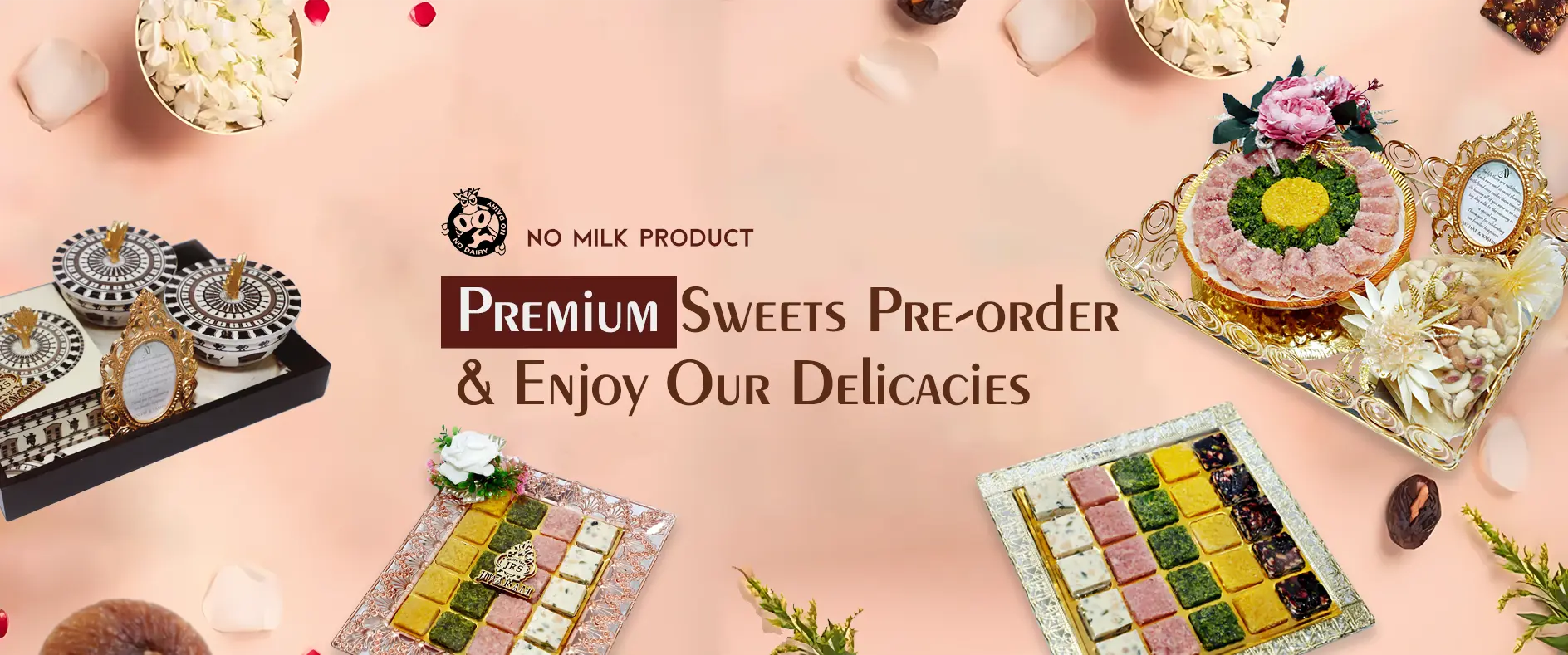Blog Details

meethi sweets
The Sweetness of Meethi Sweets: A Delightful Treat for Every Occasion
Meethi sweets are an essential part of Indian culture and cuisine, providing a deliciously sweet indulgence that everyone loves. From traditional festivals to casual gatherings, meethi sweets bring joy to every occasion. These delightful treats are made with a variety of ingredients, offering a rich taste and texture that can make any celebration special. If you’re a fan of traditional desserts or looking to explore the world of Indian sweets, meethi sweets should definitely be on your list.
What Makes Meethi Sweets So Special?
Meethi sweets, often known as Indian sweets, hold a special place in the hearts of millions. These sweets are deeply ingrained in the cultural fabric of India, prepared using recipes that have been passed down through generations. Whether it’s the rich, aromatic flavors of gulab jamun, the crispy goodness of jalebi, or the soft, melt-in-your-mouth barfi, meethi sweets come in a variety of forms, each with its own unique taste.
The key to their specialness lies in the combination of ingredients like milk, sugar, flour, and aromatic spices such as cardamom and saffron. The balance between sweetness and the subtlety of spices creates a complex yet enjoyable flavor profile that makes meethi sweets irresistible.
The History and Tradition of Meethi Sweets
Meethi sweets are not just about taste; they are a representation of tradition and culture. These sweets have been a part of Indian festivals and celebrations for centuries. Whether it’s the vibrant Holi festival, the solemn Diwali, or weddings and family gatherings, meethi sweets are served to bring joy, prosperity, and sweetness into the lives of those who enjoy them.
Many of these traditional recipes have been perfected over hundreds of years, with each region in India offering its own special variation. For example, in the northern part of India, sweets like laddoos and kalakand dominate, while in the southern regions, you’ll find meethi sweets like payasam and mysore pak being highly popular. The love for meethi sweets transcends regions, making them a unified symbol of celebration in the country.
How Meethi Sweets Bring People Together
One of the main reasons meethi sweets are so loved is because they bring people together. The act of sharing a box of meethi sweets is a tradition that fosters bonds and creates memories. Whether it’s sharing them with family during a festival or gifting them to friends on special occasions, meethi sweets play a central role in strengthening relationships and spreading happiness.
During Diwali, it is common to exchange boxes of meethi sweets as a symbol of goodwill and celebration. In weddings, meethi sweets often take center stage, symbolizing a sweet beginning for the couple’s new journey. Their ability to bring people together in joyous moments is what makes meethi sweets more than just food – they are an integral part of our emotional and social lives.
Frequently Asked Questions (FAQs) About Meethi Sweets
1. What are Meethi Sweets?
Meethi sweets are traditional Indian desserts made from a variety of ingredients such as milk, sugar, ghee, flour, and spices like cardamom and saffron. These sweets are often served during festivals, celebrations, and special occasions to add sweetness and joy to the moment.
2. Why are Meethi Sweets Popular in India?
Meethi sweets are popular in India because they are deeply connected to Indian culture and tradition. They are an integral part of many festivals and celebrations, symbolizing prosperity, happiness, and togetherness. Whether it’s Diwali, weddings, or religious ceremonies, meethi sweets bring people together to share in the celebration.
3. What are the Most Popular Varieties of Meethi Sweets?
Some of the most popular varieties of meethi sweets include gulab jamun, jalebi, barfi, rasgulla, and kaju katli. These sweets are made with different ingredients and methods, but they all share the common feature of being rich, sweet, and delicious.
4. Can Meethi Sweets Be Made at Home?
Yes, meethi sweets can be easily made at home. Many traditional Indian sweet recipes require basic ingredients such as flour, sugar, and ghee. You can experiment with different types of meethi sweets, adjusting ingredients and flavors to suit your taste.
5. Are Meethi Sweets Suitable for All Occasions?
Yes, meethi sweets are suitable for almost all occasions. They are commonly served during festivals like Diwali, Holi, and Eid, and are also popular during family gatherings, weddings, and birthdays. Their versatility and sweet taste make them a perfect treat for any occasion.
6. How Can I Store Meethi Sweets?
Meethi sweets can be stored in an airtight container at room temperature for a few days. If you want to store them for longer periods, refrigerating them is a good option. Be sure to check the consistency and freshness before serving again.
7. Are Meethi Sweets Vegan?
Some meethi sweets can be made vegan by substituting ingredients like ghee or milk with plant-based alternatives like coconut oil or almond milk. However, many traditional meethi sweets contain dairy products, so it's important to check the ingredients if you're following a vegan diet.
Conclusion: The Enduring Appeal of Meethi Sweets
Meethi sweets are more than just a treat for the taste buds; they are a celebration of culture, tradition, and the sweet moments in life. Whether you’re indulging in a plate of gulab jamun or sharing jalebi with loved ones, meethi sweets offer an experience that goes beyond mere flavor. They connect us to our roots and remind us of the importance of joy, togetherness, and tradition.

.png)